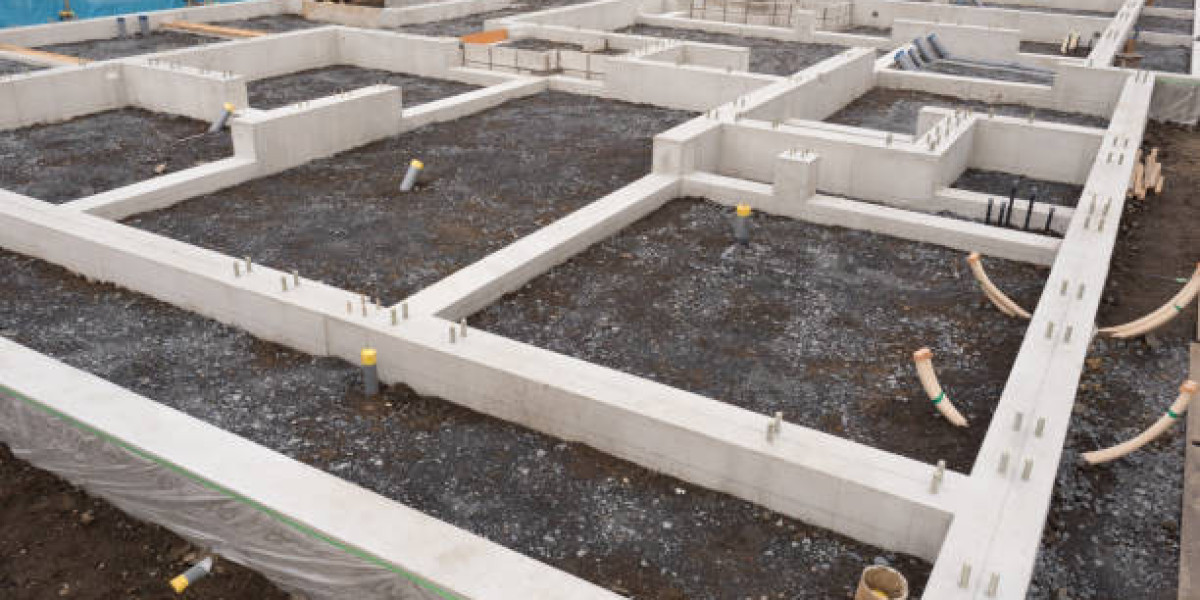Home extensions and renovations are exciting ways to improve living space and property value. But before the walls go up and the interiors take shape, a strong and reliable foundation must be in place. Among the many foundation options available today, ground beam systems have become a preferred solution, especially for renovation and extension projects where site constraints and soil conditions can pose challenges. Understanding how ground beam foundations work and their advantages can help you make informed decisions during your project planning.
What Are Ground Beam Foundations?
Ground beam foundations consist of reinforced concrete beams installed either at or just below ground level. These beams span between load-bearing points such as piles or pads and transfer the building’s load evenly across the foundation. Unlike traditional strip footings that depend directly on soil strength beneath them, ground beams bridge across soft or variable ground conditions, distributing loads through more stable points in the subsurface.
This makes ground beams particularly useful in extension work, where the new section of the building may be built on different soil or at a different level compared to the existing structure.
Why They Work Well for Extensions
When adding an extension to a home, it is common to encounter different ground conditions than those of the original building. Over time, landscaping, soil erosion, drainage issues, and previous construction can alter the ground stability. Ground beam foundations are adaptable and do not require uniformly strong soil throughout the site. They can support the new structure by spanning weaker zones and transferring the load to deeper, more stable strata using piles or pads.
This adaptability also makes them ideal for projects in urban areas, where excavation can be restricted or difficult due to neighboring properties, underground utilities, or limited access.
Renovating Older Buildings with Ground Beams
Renovation projects often involve reinforcing or upgrading the existing foundation, particularly when the building is old, damaged, or being repurposed. Traditional footings may not meet current building standards, or they might have suffered from ground movement or subsidence.
Ground beam systems allow contractors to support new structural elements while working around the limitations of the existing foundation. By installing beams around or beneath key structural points, the new construction can remain independent yet properly supported. This ensures stability and safety without disturbing the original structure more than necessary.
In many cases, the use of reinforced ground beam construction services in the UK has helped builders manage older properties with minimal demolition and reduced risk to surrounding buildings.
Structural Design and Components
Designing a ground beam foundation involves several technical considerations. Engineers must assess the structural load, soil conditions, site layout, and integration with any existing foundation system. Once the load paths are determined, the size, shape, and reinforcement of the beam are calculated accordingly.
Ground beams are typically reinforced with steel bars to resist tension forces and prevent cracking. The reinforcement is placed within formwork, and high-grade concrete is poured around it. These beams are often connected to piles, mini piles, or concrete pads that serve as the main support points, bypassing weaker soils at the surface.
Drainage and moisture protection are also critical components of the design. Without proper waterproofing and site drainage, water accumulation can compromise the long-term durability of the beam and the surrounding soil.
Installation Process for Home Projects
The installation of ground beam foundations in extension or renovation projects usually follows a clear sequence. First, the site is surveyed, and the layout of the beam is marked. Depending on the soil conditions, support elements such as piles or pads are installed to the required depth. Then, trenches are dug along the beam layout, and formwork is erected.
Reinforcement bars are tied and placed within the formwork according to the structural design. After inspection, concrete is poured and allowed to cure under controlled conditions. Once the concrete reaches the required strength, the formwork is removed, and the beam is ready to support walls or flooring systems.
In renovation work, care is taken to isolate the ground beam from the existing foundation where needed, or to connect them securely without causing stress or movement in the old structure.
Benefits of Ground Beam Foundations
There are multiple advantages to using ground beam systems in extension and renovation work. One of the biggest benefits is their ability to span across weak or disturbed ground without compromising stability. This means less excavation is needed and the risk of settlement is reduced.
They also offer design flexibility, allowing builders to work around obstacles like tree roots, drainage pipes, and utility cables. For homes with difficult access, ground beams reduce the need for large machinery or heavy excavation, making them more practical and less disruptive.
From a structural standpoint, they provide even load distribution, reducing the chances of differential settlement or cracking. In areas with variable weather, such as frost or heavy rain, ground beams remain less affected due to their reinforced design and elevation above problematic soil layers.
Considerations Before Choosing Ground Beams
Despite their advantages, ground beams may not be suitable for every project. Their installation requires accurate engineering and skilled labor to ensure correct alignment, reinforcement, and curing. If not properly designed, they may not perform as intended, leading to future structural issues.
Cost can also be a factor. While they reduce excavation and time on-site, the use of reinforcement and concrete, as well as the need for pile foundations, may increase upfront costs compared to shallow strip footings. However, these costs are often offset by reduced risk, lower long-term maintenance, and fewer delays.
For small extensions on firm, uniform soil, a simpler foundation system might be sufficient. But for anything more complex, involving varying soil or access constraints, ground beams provide better security and performance.
Integration with Existing Structures
Integrating ground beams with an existing home or building requires careful coordination. The level of the beam must align with the new floor height and should be planned to avoid transferring load to weak or unstable parts of the old structure. Engineers often design the new foundation system to act independently, ensuring the old building remains undisturbed.
If the extension is connected to a house with shallow foundations, ground beams can be used to avoid differential settlement between the old and new structures. Movement joints and flexible connections may be included in the design to allow some natural movement without damaging the building envelope.
Examples from Residential Projects
Across the UK, ground beam foundations have become increasingly popular in residential projects. Homeowners extending kitchen areas, adding second-storey rooms, or converting basements have found that ground beams offer a stable, cost-effective alternative to traditional trench foundations. Builders also prefer them for their predictable performance and the ease of planning around utilities and neighboring properties.
In some cases, heritage buildings or listed properties undergoing renovation have used ground beam systems to strengthen the structure without altering the historical features or disturbing sensitive soil zones.
Conclusion
Ground beam foundations are a smart, modern solution for extensions and renovation projects. Their ability to handle complex soil conditions, minimize excavation, and integrate with existing structures makes them ideal for a wide range of residential construction needs. Whether you’re expanding your home, reinforcing an older building, or managing a site with limited access, ground beams provide a solid foundation choice backed by engineering precision.
If you're planning a project in the UK, working with experienced providers of reinforced ground beam construction services in the UK ensures that your foundation is built to last, meets all regulations, and performs reliably for years to come.








